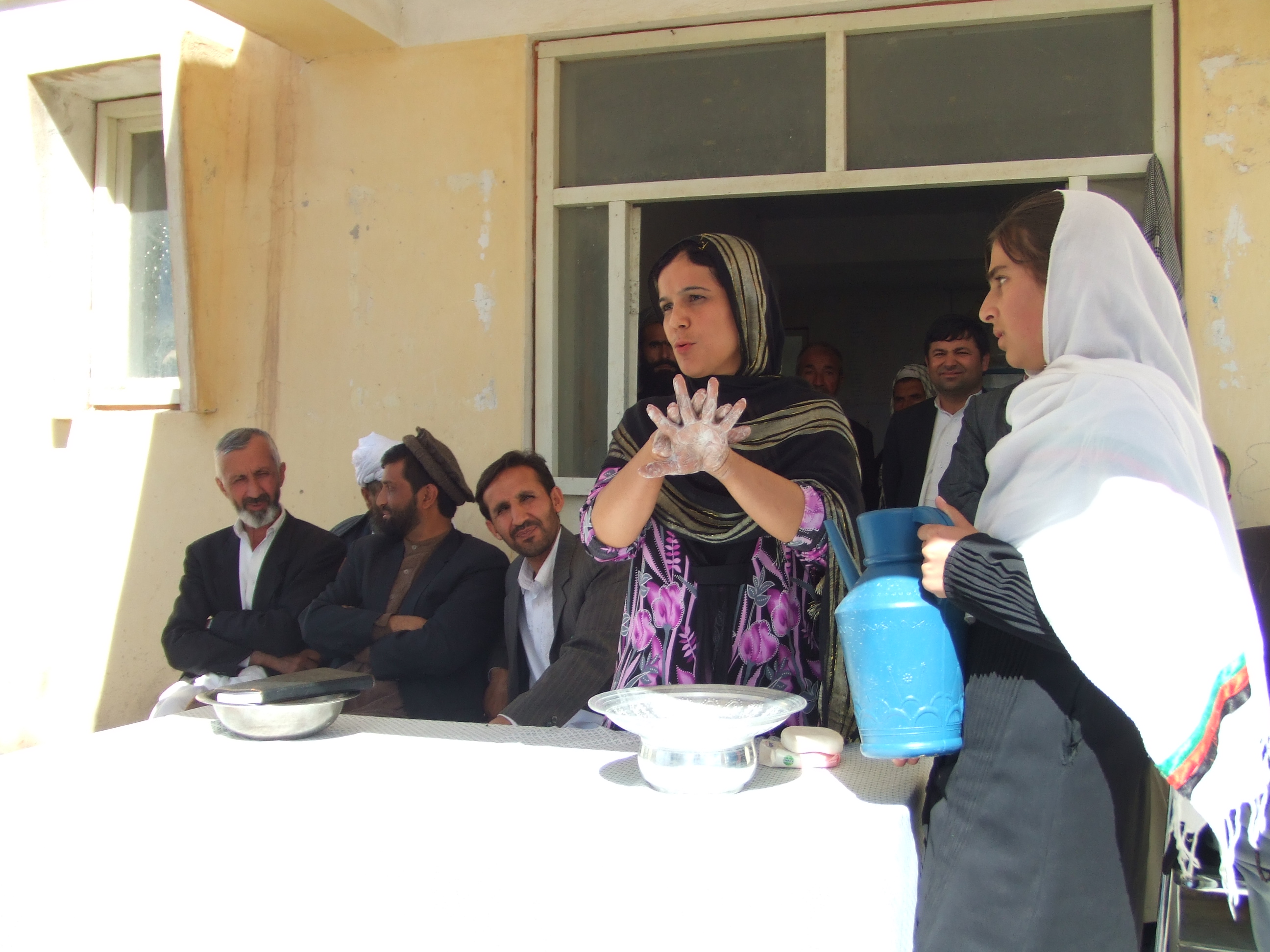What Difference Does Collaborating, Learning, and Adapting Make to Development? Key Findings from a Recent Literature Review

With roughly 120 collaborating, learning, and adapting (CLA) Case Competition submissions over the last two years, we have significant anecdotal evidence that an intentional, systematic, and resourced approach to CLA improves development outcomes. But our team wanted to dig deeper and review existing literature. Because CLA is a USAID construct, we expanded our review to include other search terms such as strategic collaboration, continuous learning, and adaptive management.
We wanted to know:
- Does an intentional, systematic and resourced approach to collaborating, learning, and adapting contribute to development outcomes?
- If so, how? And under what conditions?
So what did we find?
First, we found that there has yet to be a comprehensive review of the impact of a holistic approach to strategic collaboration, continuous learning, and adaptive management on organizations’ ability to advance their missions. Instead, the literature presents evidence confirming that aspects of collaborating, learning, and/or adapting matter to development outcomes and organizational performance.
Highlights include:
- Monitoring and evaluation (M&E) is positively and significantly associated with achieving development outcomes when incorporated into program management and designed to support learning and decision making. A June 2016 World Bank study[1] analyzed large sets of data to determine if there was a correlation between the quality of M&E and project outcomes. It found that good-quality M&E that informs decisions during and after implementation is positively and significantly associated with project outcomes. In addition, several cases in the literature pointed to the importance of using evaluation for learning to enable adaptive management and improve performance.[2]
- Taking the time to pause and reflect on our work is critical to learning and improved performance. Harvard Business School researchers found that “…purposeful reflection on one’s accumulated experience leads to greater learning than the accumulation of additional experience.”[3] This means that to learn, we can’t just consume information and then turn around and implement it. We have to stop and ask ourselves how our efforts are progressing, why, and what we should do differently to learn and be more effective.
- Strategic collaboration improves the bottom line. Private sector companies with better collaborative management capabilities achieve superior financial performance.[4] This is a big deal and has implications for overall organizational effectiveness, including organizations for whom profit is not the goal, such as NGOs and government agencies.
 Why are more collaborative organizations more successful? Because collaborative relationships among individuals and groups are important for innovation and the creation and distribution of knowledge. By collaborating effectively, groups and teams develop “transactive (or shared) memory systems,” which enable better group goal performance.[5] However, collaboration is not a panacea. It has to be strategic, or else it can lead to time wasting and high interaction costs that can slow decision-making, with knock-on effects such as poorer work quality, interpersonal conflict, and loss of motivation.[6]
Why are more collaborative organizations more successful? Because collaborative relationships among individuals and groups are important for innovation and the creation and distribution of knowledge. By collaborating effectively, groups and teams develop “transactive (or shared) memory systems,” which enable better group goal performance.[5] However, collaboration is not a panacea. It has to be strategic, or else it can lead to time wasting and high interaction costs that can slow decision-making, with knock-on effects such as poorer work quality, interpersonal conflict, and loss of motivation.[6] - Locally led development is most effective. The literature emphasizes the need for approaches that are embedded in the local context and negotiated and delivered by local stakeholders. This type of development requires that implementers think and work politically, which in turn requires strategic partnership and iterative learning by doing that leads to continuous improvement. The literature concluded that that this approach resulted in better development results.[7]
- Leaders are essential to creating a learning culture, the foundation of learning organizations.[8] The literature discusses how organizations that encourage honest discourse and debate and provide an open and safe space for communication tend to perform better and be more innovative. Leaders are central to defining culture, and “learning leaders” are generally those who encourage non-hierarchical organizations where ideas can flow freely.
For more findings, see the Evidence Base for CLA literature review summary on Learning Lab.
What USAID and LEARN are doing to build the evidence base
The literature says that the impact or contribution of CLA on organizational effectiveness and development outcomes is difficult to measure. Strengthening this evidence is a key area for further research. To fill this gap, USAID’s Bureau for Policy, Planning and Learning and the LEARN contract will collaborate with other implementing partners and USAID operating units to strengthen the evidence base for CLA, answering the questions highlighted above:
- Does an intentional, systematic, and resourced approach to collaborating, learning, and adapting contribute to development outcomes?
- If so, how? And under what conditions?
Here is what you can expect to see from USAID and LEARN over the next few years:
- Updates to the literature review: We will update our literature review quarterly and share the result annually, at least. If you know of articles we should include or may have missed, please contact us at [email protected] with the subject line: Evidence Base for CLA.
- Annual CLA Case Competition Analysis: We will review cases submitted each year and analyze how the CLA approaches have contributed to organizational change and improved development results. The first Case Competition analysis will be released this fall and cover entries from the 2015 competition. We will continue to carry out this analysis each year.
- Learning Network for Implementing Partners: In collaboration with the Knowledge-Driven Agricultural Development contract with funding from USAID/PPL and localworks, we released a request for applications for implementing partners to join a learning network seeking to answer the questions above. We launched the learning network and will synthesize and share evidence from partners via Learning Lab.
- Learning partners with other USAID Operating Units: Similarly, we have begun collaborating with other operating units at USAID, including the Democracy, Human Rights and Governance Center, localworks, Office of Forestry and Biodiversity, and the Global Development Lab to answer these key learning questions and leverage the knowledge each operating unit brings to bear.
We are excited to launch this work and look forward to sharing what we learn in the future. We also want to hear about the evidence you are generating to answer these learning questions and what you would most like to learn about. Please contact us at [email protected] with the subject line: Evidence Base for CLA.
We also hope our evidence-building work responds to the needs and interests of our larger community, so please share your feedback in this very brief survey (it should only take five minutes of your time). Thank you.
[1]Raimondo, E., “What difference does good monitoring & evaluation make to world bank project performance?” World Bank Group Independent Evaluation Group, June 2016.
[2]Perrin, B., Zorzi, R., Rodriguez-Bilella, P., Bayley, S., Yakeu, S., & De Silva, s. (Eds.) (2015). Evaluations that make a difference.
[3]Di Stefano, Giada, et al. “Learning by Thinking: Overcoming the Bias for Action through Reflection.” Harvard Business School NOM Unit Working Paper No. 14-093. March 29, 2015.
[4]McKinsey and Company. 2009. “How do I drive effective collaboration to deliver real business impact?”; Cross, R., Rbele, R., Grant, A., “Collaborative Overload” Harvard Business Review Jan/February 2016.
[5]Austin, J. R. 2003. Transactive memory in organizational groups: The effects of content, consensus, specialization,and accuracy on group performance. Journal of Applied Psychology, 88: 866-878.
[6]McKinsey and Company. 2009. “How do I drive effective collaboration to deliver real business impact?”; Cross, R., Rbele, R., Grant, A., “Collaborative Overload” Harvard Business Review Jan/Feb 2016; Andersson, K., “Motivational Dilemmas in Collaborative Learning Activities: The Case of the Swedish International Development Cooperation Agency (SIDA),” Public Administration and Development, 29, 5, (2003): 341-351.
[7]Faustino, J. and Booth, D., “Development entrepreneurship: How donors and leaders can foster institutional change,” Working Politically in Practice Series, Case Study No. 2. London: The Asia Foundation and ODI (2014); ODI Research reports and Studies, “Politically smart support to economic development,” March 2016; Booth, D., “Thinking and Working Politically,” GSDRC Professional Development Reading Pack No. 13. Birmingham, UK: University of Birmingham (2015); Drew, R., “Learning in Partnership: What constitutes learning in the context of south-north partnerships?” BOND Discussion Paper. London: British Overseas NGOs for Development (2002).
[8]Hailey, J. and James, R. “Learning leaders: the key to learning organisations,” Development in Practice, 12(3) (2002): 398–408; Su-Chao, C. Ming-Shing, L., “A study on relationship among leadership, organizational culture, the operation of learning organization and employees' job satisfaction,” The Learning Organization 14.2 (2007); LaFasto, F., & Larson, C. “When teams work best: 6000 team members and leaders tell what it takes to succeed,” Thousand Oaks, CA: Sage (2001); Lencioni, P. “The five dysfunctions of a team: A leadership fable,” San Francisco: Jossey-Bass 2002); McKinsey and Company, “How do I drive effective collaboration to deliver real business impact?” http://www.mckinsey.com/~/media/mckinsey%20offices/canada/latest%20thinking/pdfs/how_do_i_drive_effective_collaboration_to_drive_real_business_impact.ashx; Blanchard, K. and Waghorn, T., “Make Sure your employees trust you - or else” Forbes http://www.forbes.com/2009/03/23/trust-respect-employees-leadership-managing-blanchard.html.



